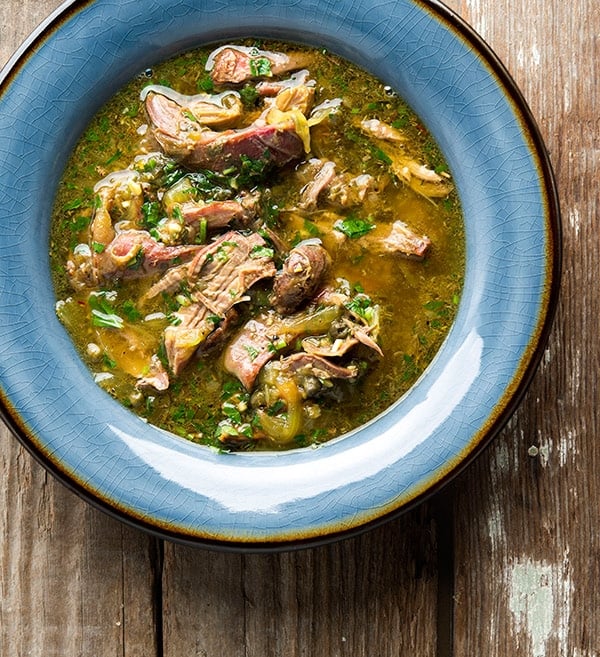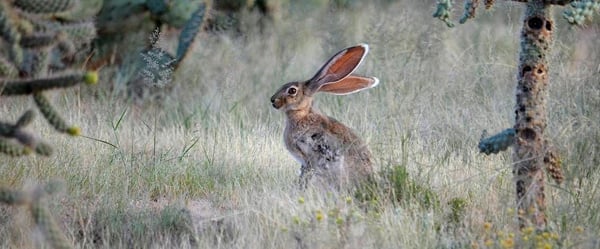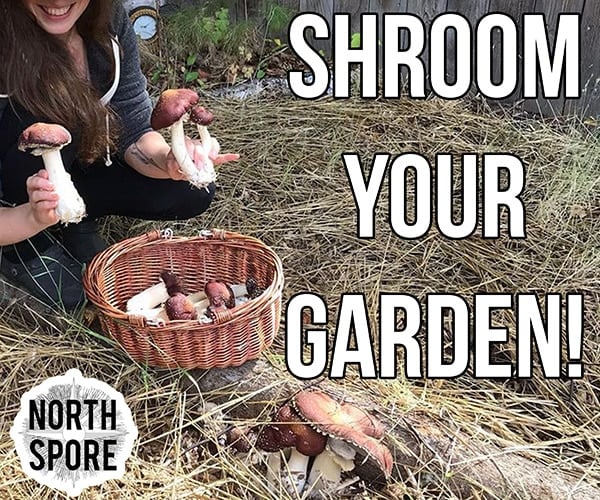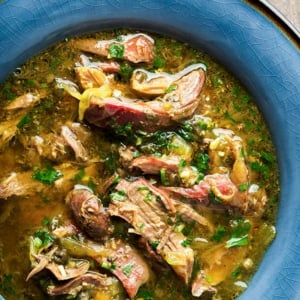As an Amazon Associate I earn from qualifying purchases.

There’s a reason few people eat jackrabbits in this country: For many, they are indelibly stained as poverty food, a meat of the Depression or the even harsher privations of the pioneer farmers who eked out a living on the sod of the Great Plains.
What’s more, non-hunters cannot buy jackrabbits, which unlike their cousins the true rabbits, will not cotton to domestication. And most hunters, who see these giant rabbits everywhere, rarely shoot them: Their minds are filled with cloudy notions about parasites, diseases and foul-tasting meat.
This is a pity, because jackrabbits are nothing more than American hares. Not a true rabbit, most hares have dark meat whose color falls somewhere between duck and beef. Hares live longer and are smarter than rabbits, and give birth to young that can hop away at a moment’s notice; rabbit younglings are pink and helpless.
Holly and I shoot hares, mostly black-tailed jackrabbits, whenever we get the chance. We do this for several reasons, mostly because they are gamey and delicious. Hares are more highly regarded in Europe, and I have many recipes for them from countries as disparate as Sweden and Sardinia.
That’s where my most recent hare stew came from.

I developed my recipe for a Sardinian hare stew from a rabbit dish called coniglio al guazzetto that I found in Giuliano Bugialli’s book Foods of Sicily & Sardinia and the Smaller Islands. It is unusual in that it uses capers as a major flavoring component. The other dominant flavors are saffron, which grows on the island, and red wine vinegar. It is a heady dish, great for cold weather.
If you cannot get hare, which is likely I am sorry to say (although you can buy real Scottish hare from D’Artagnan), I would substitute lamb first; that just seems more Sardinian to me. You could also go with rabbit or chicken, but make sure the chicken is as old as you can find — look for a stewing hen in Asian or Mexican markets.
How did jackrabbits and hares get to be so stigmatized? Part of the reason is because those cloudy notions wafting through hunters’ heads have an element of truth to them.
Jackrabbits, like all rabbits in this part of the world, can carry a disease call tularemia, which is no fun. You can tell by looking at the liver: If it is streaky with white marks, it may be infected. The meat will be fine, however, so long as you braise it well. Always wear gloves when butchering wild rabbits and hares in the West and you will be fine.
There is another unusual thing about the meat of jackrabbits — it lacks a certain protein (or amino acid, I can’t remember) that most other meats do, so if you eat nothing but jackrabbits, as many Great Plains pioneers did, you will actually develop malnutrition; it’s a little like contracting pellagra from eating too much corn. Once our ancestors realized this fact, they banished jackrabbits from their diet. Tossing the bunny out with the bath water, I’d say.
I would like to make the case for reintroducing hares to the American diet.
For starters, jacks are abundant — and there is no closed season on them in many states. That means you can shoot as many as you will eat, whenever you feel like it. And they freeze well. You should know that jackrabbits in hot weather are not nearly so tasty as those in the fall (the ones I used for the hare stew were shot in a pear orchard in September), and summer jacks can sometimes be attacked by botfly, which leaves icky sores on the hare’s back but does not normally affect the meat; botflies also affect other game animals, but the flies are usually gone by the time hunting season rolls around.
Another reason to eat more jackrabbits and hares is because they are big. Really big. One black-tailed jackrabbit can feed four easily, and Holly and I got four meals out of two jackrabbit forelegs plus four hind legs.
Still another pleasure of eating hares is their flavor. The dark meat is undeniably gamey, with an indescribable aroma and flavor that screams “wild.” It is not for everyone: One allegedly epicurean judge on Iron Chef turned her nose up at the wild hare she was served in “Battle Rabbit.” Keep in mind that snowshoe hares are very different — they are lighter in color and far milder, more like rabbit, actually. I like the lustiness of jackrabbit, however, especially with other strong flavors like the capers and saffron in the hare stew. A little goes a long way.
Which is probably the best reason why eating more jackrabbits and hares is a good idea in these tough economic times. Like I said, we got many meals out of a little more than one hare. The reason is because the meat is so flavorful you can plunk a dollop of stew on a bowl of polenta, or couscous, or rice, and be perfectly happy. We ate most of a loaf of bread when we first sat down to eat this stew. The only domestic animal I can think of that even comes close to the depth of flavor of a wild hare is an old chicken.
Eating this way brought me back to my old days as a graduate student and cub reporter. I was poor, and needed to make meat stretch. I developed an eating technique that made sure I got some sauce and a little bit of meat with every large spoonful of grain. I always left the choicest piece of meat for the last bite. It was — and is — a gratifying way to eat. It felt like I was satisfying my Champagne tastes on a Budweiser budget.
And that’s a good thing these days.
Sardinian Hare Stew
Ingredients
- 1-2 hares or rabbits
- 4 tablespoons olive oil
- 1/2 cup chopped parsley, plus another 1/4 cup for garnish
- 5 cloves garlic, chopped
- 1 large onion, chopped
- 1/4 cup capers
- Large pinch saffron
- 1 cup warm water, to bloom saffron
- 1/4 cup high-quality red wine vinegar
- Salt
Instructions
- Salt the hare or rabbit pieces well and set aside at room temperature for 30 minutes.
- Get the olive oil hot over medium-high heat in a large pot or Dutch oven. Pat the hare pieces dry and brown well in the pot. You might need to turn the heat down to medium. Do it in batches and take your time. Place the browned pieces in a bowl while you do the others. This could take 30 minutes.
- Meanwhile, chop half the capers. Get your tap water running as hot as it will go and fill a cup measure. Crush the saffron in your palm and sprinkle it into the hot water. Get every bit, and let this soak as the hare is browning.
- Once the meat is all browned, remove it to a bowl. Add the onion and saute until browned. Add the garlic and cook for 1-2 minutes.
- Add everything into the pot except the extra 1/4 cup parsley, nestling the hare pieces in tight. If the liquid does not come at least halfway up the sides of the hare pieces, add some more water. Do not add wine or stock — the point is to have pure flavors here. Cover tightly and simmer gently over low heat for at least 90 minutes. Hare needs longer, but chicken and domestic rabbit should be done by then. Check the hare after 2 1/2 hours; it should be close to falling off the bone. When it is, pull the meat out and strip it from the bone.
- Return it to the pot with the extra parsley and mix well. Turn off the heat and cover for five minutes. Serve over polenta, couscous, Sardinian fregula pasta or with crusty bread. Don’t forget the wine: You will want a big, heavy red here.
Nutrition
Nutrition information is automatically calculated, so should only be used as an approximation.







Great recipe! I’ve made it many times already. Thanks Hank!
I’ve adapted this recipe to the pressure cooker so I can get this on the plates in under an hour. I have found that the quality of saffron can make a really stark difference. Not cheap, of course, but it is worth it to get the good stuff.
Hare must be one of my favourite meats. In season (which is right now)they’re usually available at markets and specialised meat/game shops here in The Netherlands. And even though hares are a common sight in our meadowlands, they’re no poverty food.(we’re no hunting country) In fact I paid €15 for two legs this past weekend. I usually prepare them in stews with red wine or dark beer, but this recipe sounds delicious. Will definately try this.
Karin: Absolutely! It’ll be great with squirrel.
Looks wonderful! I have 8 squirrels in the freezer taking up too much room. Do you think this recipe would work for squirrels? I made the squirrel aurora recipe and it was wonderful. The “lusty” sauce has me intrigued.
Looks delicious and similar to a dish called “feijoada” that we learned when living in Portugal. Feijoada is a white bean stew and is also made with rabbit. Let us know what you think of the recipe: https://thebigfieldtrip.com/recipes_portugal_feijoada.html
Hi there. I live in NZ and we have a native bird called a Pukeko(which is also a pest-very prolific) and my hubby cooked it up tonight using this recipe. Before he cooked it, I was scoffing and more or less saying “there ain’t no way in hell I’m eating that” to now saying….mmmmmmm bloody delicious:) Great recipe, am looking forward to him cooking it with duck or Canadian goose!
Finally made this tonight with a couple of jackrabbit I shot up in Lassen. So good!! My wife loved it too! She likened it to pork shoulder. Thanks for the recipe, Hank!
Thanks for the great recipe. We made it last night with a snowshoe hare. FANTASTIC! I’ll definitely be trying out some others on here soon.
The photos are really what got me to try it. Good job.
Hey Hank,
Tried this tonight and it was amazing. I have to say, I was skeptical of your instructions to use only water instead of wine or stock, but the final result was as flavourful as promised.
Used a whole farmed rabbit and the only tweak to the recipe was the inclusion of the zest of 1/2 a lemon to the stewing liquid. Served over Israeli couscous.
Great, simple recipe.
Josh
Hank,
I just stumbled on your blog. I love everything I’ve read. This entry is an especially good one. I live in Arizona. My friend and I go hunting for various species. Most recently, during Quail and Dove season we found ourselves catching nearly as many rabbits as we did birds. We caught both Cottontails, and Jack Rabbits. One of the big advantages I found is it’s size. You get nearly twice the meat off a Jack rabbit that you do off a Cottontail.
Love what you’ve got here. Added it to Google Reader. Can’t wait to see more.
Bpaul: Great to hear! Let me know if you like it, too.
Cork: Yep, jackrabbits are well worth a second chance. Try to shoot a few before the weather gets too hot; they’ll be fatter then.
James: Nice blog! I am definitely bookmarking it. I am actually a little surprised to learn of so many proud jackrabbit eaters — makes me happy, as they are so unloved in the country.
Beth: Befriend a hunter or buy one online from D’Artagnan, although they are pricey.
Soozcat: “Scrummy,” eh? I like it, and may steal that word, which I suspect you invented. as for West Desert jackrabbits, worth a try, no?
Courtney: I am SO happy you tried the Scottish hare! Never had a bad piece of meat from D’Artagnan…
Your post prompted me to order some Scottish hare from D’Artagnan. It came, and it was skinned, but still had all its viscera. Wow. I stewed it, simply, with a bit of brandy and hot mustard. The whole house smelled wonderful — a sour note of gaminess with the same sharp overlay of iron you get from organ meat. We each had a let, and I’ve saved the organs for breakfast tomorrow. What an amazing thing. Thanks, guys!
Growing up in Utah around several inveterate hunters, I had the chance to sample plenty of elk roasts, deer jerky and home-cooked venison stew–but I’ve never tasted jackrabbit. Your description and photos make it sound positively scrummy… wondering now whether I should encourage my brother to take a pot shot at a few jacks the next time he’s out in the West Desert.
I’ve never had hare but would like to try it!
Wow … great blog. I stumbled across your blog a while ago, lost it and just found it again. I love the Jackrabbit stuff. Check out my own blog with recent posts about hunting and cooking jackrabbits. https://oldgunkie.blogspot.com
I recently made a Jackrabbit terrine based on a recipe from Reynaud’s book. Looks like I need to go kill another couple to try out your great looking recipes.
Best,
Jim
Wheeew! Hank, I was all bummed, like every year at this time, when my favored, tender, white-meated cottontail rabbit season ends.
…Now, I can get more practice with my .22 pellet gun. Sure beats the last attempt at softening tough jacks with a hassenpfeffer recipe almost 25 years ago!
Cheers,
Cork
So those jacks I mentioned bagging last month? My hunting partner and his wife used variations of your recipe here and cooked them up. They raved and raved about the food, and his wife is even a bit squeamish/sensitive to ‘gaminess’ and she couldn’t get enough of it.
I’m psyched. Can’t wait to get some in the pot myself.
Bp
The recipe was great and yes, I figured I used lots more saffron than you did. Well, you said a “generous pinch” and I’m a very generous person! 😉 Made this recipe with only the Cottontail. We’re going to have to invite people over when I cook the Snowshoe… the thing is huge!
Jim: You are correct, of course. I was using that as shorthand for the niacin issue. Aztecs and Mexicans fisxed that problem using slaked lime. Poor Italians never figured that one out, nor did American Southerners for a long time…
Actually eating too much corn isn’t the cause of Pellagra;
A diet lacking in Niacin is the cause. Corn
is not a good source of Niacin, so relying
on corn as a staple without obtaining Niacin
from some other food will cause Pellagra.
I seem to remember though that processing
corn into Hominy releases what Niacin corn contains.